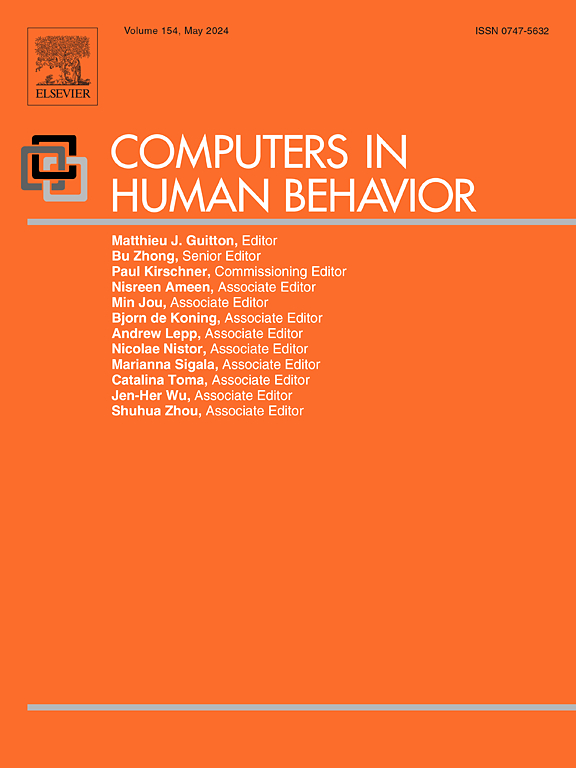战场上的脑电波:对脑电图、白质微观结构和《星际争霸II》性能的初步洞察
IF 8.9
1区 心理学
Q1 PSYCHOLOGY, EXPERIMENTAL
引用次数: 0
摘要
本研究考察了即时战略游戏《星际争霸2》中视觉搜索技能的神经和认知相关性。具体来说,我们探讨了分数各向异性(FA)、事件相关电位(erp)和游戏表现之间的关系。在视觉搜索(VS)任务中,我们使用脑电图记录测量与视觉注意相关的N2pc成分,并收集结构神经成像数据来评估白质微观结构。我们的分析显示,在低效率的搜索过程中,较低的N2pc振幅与更好的游戏vs相关表现相关,这表明更有效的神经处理有助于在复杂的游戏环境中取得成功。此外,我们还发现,右前肢内囊(rALIC)和左外囊(lEC)更大的FA与出色的游戏视觉搜索表现有关,这突出了大脑结构和功能在培养视觉搜索技能和游戏熟练程度方面的相互作用。我们的研究结果表明,动作视频游戏为研究复杂认知过程背后的神经机制提供了一个合适的环境。本文章由计算机程序翻译,如有差异,请以英文原文为准。
Brainwaves on battlegrounds: Preliminary insights into EEG, white matter microstructure, and StarCraft II performance
This study examines neural and cognitive correlates of visual search skills in the real-time strategy game StarCraft II. Specifically, we explore the relationship between fractional anisotropy (FA), event-related potentials (ERPs) and in-game performance. We used EEG recordings to measure the N2pc component, associated with visual attention, during a visual search (VS) task and collected structural neuroimaging data to assess white matter microstructure. Our analysis revealed that lower N2pc amplitudes during inefficient search correlated with better in-game VS-related performance, suggesting that more efficient neural processing supports success in complex gaming environments. Furthermore, we found that greater FA in the right anterior limb of the internal capsule (rALIC) and the left external capsule (lEC) is associated with superior in-game visual search performance, highlighting an interplay between brain structure and function in developing visual search skills and gaming proficiency. Our results suggest that action video games provide a suitable environment for studying neural mechanisms underlying complex cognitive processes.
求助全文
通过发布文献求助,成功后即可免费获取论文全文。
去求助
来源期刊

Computers in Human Behavior
Multiple-
CiteScore
19.10
自引率
4.00%
发文量
381
审稿时长
40 days
期刊介绍:
Computers in Human Behavior is a scholarly journal that explores the psychological aspects of computer use. It covers original theoretical works, research reports, literature reviews, and software and book reviews. The journal examines both the use of computers in psychology, psychiatry, and related fields, and the psychological impact of computer use on individuals, groups, and society. Articles discuss topics such as professional practice, training, research, human development, learning, cognition, personality, and social interactions. It focuses on human interactions with computers, considering the computer as a medium through which human behaviors are shaped and expressed. Professionals interested in the psychological aspects of computer use will find this journal valuable, even with limited knowledge of computers.
 求助内容:
求助内容: 应助结果提醒方式:
应助结果提醒方式:


